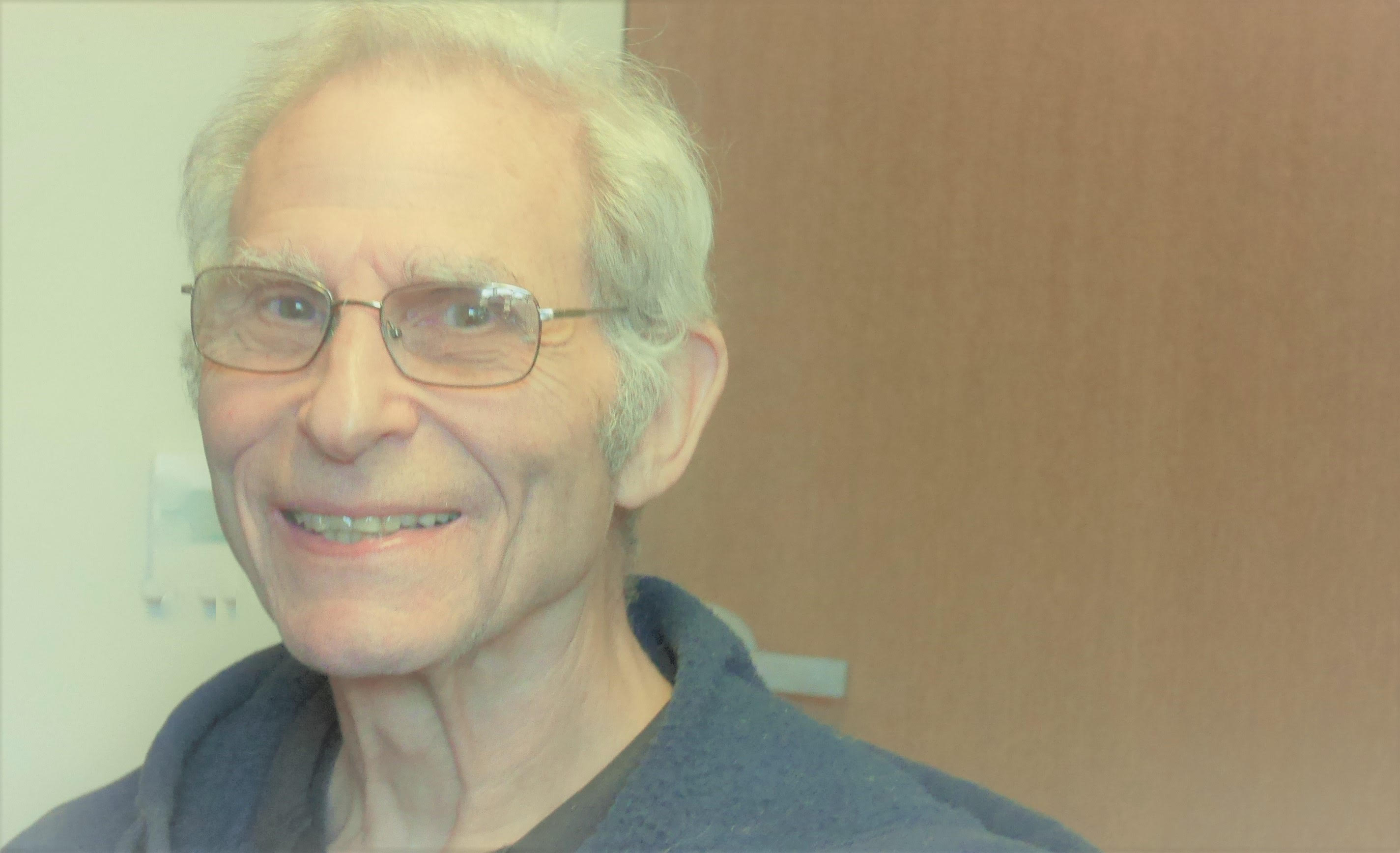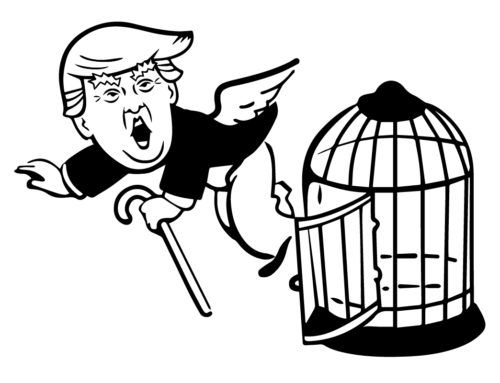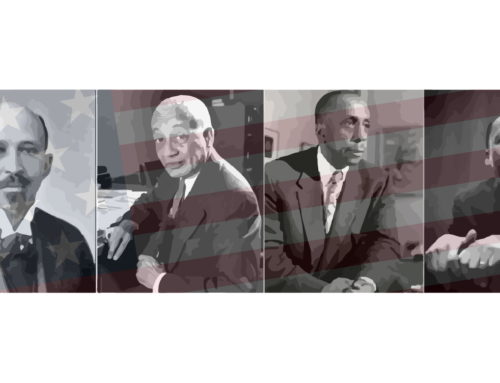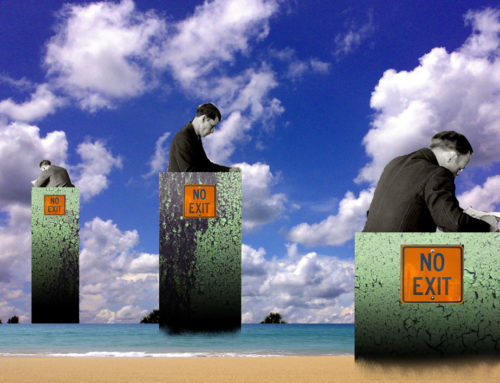Journey2Psychology, a project by: Dr. Michael Gordon
Mike Gordon is travelling across the world to converse with influential psychologists and discover the stories behind their work.
This journey will form the basis of a book from Political Animal Press
Follow Dr. Gordon’s travels in full at Journey2Psychology
Over a career of more than 50 years Dr. Mike Posner of the University of Oregon has been a defining figure in Psychology — most notably for his efforts shepherding in the age of neuroscience for Psychology. In studies on attention, visual orienting, and a host of related cognitive processes, Dr. Posner and his colleagues have illustrated where and how neural circuits operate in the brain.
If I can wax poetically for a moment, one might recollect the parable of the blind men and elephant. Each one of the blind men reached out to touch the elephant and to describe their experience and each felt something different across the features of this large animal. One patted a solid mid-section, rough skinned body and declared the object to be a wall, one felt a whip-like tail with a frayed end and shouted that the object was a broom, one grasped the thick, long trunk and exclaimed that it was a snake, and still another touched the fan-like ears and informed his peers that it was a peacock, I mean a fan. That last blind man seemed to often confuse fans and peacocks, much to the chagrin of his wife and the bewilderment of the other blindmen. In any case, each found something important and exclaimed his excitement about this find to his colleagues! They debated and argued over their experiences. They accused each other of falsehoods and of misinterpretations — how could it be a snake when it was a broom? How could it be a broom when it was a wall? Eventually, slowly, and with much hand-wringing, they put their experiences together to construct an animal larger than any had originally thought and with more complexity than any had directly experienced.
The process of science is often thought of in this way: with each person exploring one small element of the field and declaring our amazing findings to our peers. We debate where and how each fraction we find might fit with other findings; whether those findings are valid or questionable; and when the scientific process is successful, we eventually endeavor to support a wider understanding of the whole by integrating each of these fractional bits. Only together do they seem to produce something that we hope will approximate the whole. That is most of us working in science: working very, very hard on a little piece of the world and all its phenomena and trying to add to the collective understanding as a result. And then there is Mike Posner. He got a hold of one end of that elephant of science and wouldn’t let go. He clawed his way across systems and through a diverse array of elements and neural processes. While there is much more we seek to understand and a tremendous amount of questions still ahead to be addressed, Dr. Posner didn’t settle for one small part. Over the last several decades he has constructed a lasting model of the divergent pieces and behaviors of the brain. He has tested systems of processes and structure-function relationships that underlie thought, itself.
Because of the research of Dr. Posner and his colleagues, we know that a single idea will likely activate a whole subset of different parts and places in the brain. The mental/psychological experience of looking at something (let’s say an elephant) is unified. We can orient and address our thoughts to seeing and experiencing that elephant. Posner and colleagues have explicated the neural circuitry which makes all that happen: orienting towards the elephant, processing the ears, nose, trunk and redirecting attention towards each of those parts. Among many jaw-dropping ideas to come from this research was the diversity and location of the neural structures involved. The simple idea that many philosophers and early physiologists intuitively shared for about 1000 years is that there is a spot in the brain for one activity and a different spot in the brain for something else. Many hypothesized that neurons that work together will be sitting neatly together in a little group (or maybe even just one neuron, king of the other neurons) directing a specific behavior. That idea was kind of the basis of phrenology and other debunked early theories of how the brain is formed. Clever ideas that are totally wrong. Most neural activities draw on activity in different parts of the brain, and occurring in overlapping intervals. The activity in the brain is, to a casual observer, somewhat chaotic and divergent. It took the decades of research from Dr. Posner and colleagues, to demonstrate where and how these neural circuits are formed, and how they relate to the seemingly effortless ability we possess to pay attention to one thing and then to transfer that attention elsewhere. Most scientists find one part of the big elephant and work on that. Dr. Posner found one part and kept on tracking, piece by piece, filling in a larger chunk of the animal than most of us knew existed.
To start, Dr. Posner introduces himself:
Because Dr. Posner has received some much deserved recognition for his research from the various esteemed organizations of Psychology and, consequently, been the subject of more than a few biographical articles, some of the background from his early life is already well-known. His father, Philip Posner, completed Law school using evening courses and for the first few years of Mike’s life his father was a trial lawyer in Cincinnati, OH. While Philip Posner had some success as a lawyer, due to some health issues he was advised move out to west. Perhaps the warmer climate would relieve his symptoms? Philip moved his family west and never practiced law again, since California does not have reciprocity with Ohio for law licenses. Also, sadly, the climate was not, actually, the hoped-for cure to improve his health. So, while Philip Posner stayed active and took to new means of employment, he was chronically bothered by a skin condition that had nothing to do with the external temperature. The family moved again to Seattle. Eventually, Philip Posner took up social work and Mike’s mother, Rose, worked part-time selling shoes. She actually helped get Mike one of his first jobs as a stock boy at Nordstorms. (In those days Nordstroms was, of course, a shoe store and not yet a large, national department store with a shoe department). That tells us something of the industriousness of the Posner family, a little of the history of retail in the United States, but nothing about how he got into Psychology.
Here we learn a bit about Dr. Posner’s undergraduate education at the University of Washington:
In 1957 Mike receives his BS in Physics from the University of Washington and, because it was a land grant college, he completed the requisite two-years of ROTC. Moreover, with an active war in Korea during those years, there was a very real possibility of being called into active service upon graduation. Consequently, as a young man, Mike opts to go the extra mile and earn his stripes in the military. It was a strategic decision: if he is going to be called up then he will serve as an officer and earn the extra pay. After graduating, Mike completes his 6 months of training and enters the reserve corps, with his Physics degree in hand, and some options about where to go in his future.
In this next excerpt, Dr. Posner describes how he finally gets involved with Psychology:
There is an interesting confluence of factors at the onset of Dr. Posner’s involvement with Psychology. An important influence comes from Mike’s brother, Jerome (Jerry). Jerome Posner is five years older, he is smart, and he has a clear life plan to become a physician. One might suspect, that an older, smart, self-directed brother must have been a powerful voice guiding Mike as he thought through questions big and small. Well, Jerry saw his brother struggling, he was already engaging in medicine and human anatomy, and he made a recommendation to Mike. Try something a little easier than Physics. Maybe biology? Clearly that has stayed with Mike over the years: his brother’s recommendation about where he might direct his, ahem, attentions.
Mike also notes his strong interest in philosophy and the romance of understanding a system from its most elemental parts (which is what drew Mike to physics).Think about this for a moment. What could be more beautiful than the most basic elements of the world that make our very existence possible? Even though physics was very tough — maybe too tough for young Mike — his curiosity about the world remains. Or more specifically philosophical attraction to understanding a system from its most basic and elemental parts remains. So brother Jerry directs Mike to biology, and Mike is attracted to the basic parts of systems. Is this starting to sound like the first steps of a budding neuroscientist?
Nonetheless, following six months of military training, Mike gains employment working with Boeing. He has gained the orientation to work with psychology so he gets involved with Boeing’s human factors unit as they to try to determine some of the functional interactions of an airplane pilot. Human factors is a very practical and fascinating area of Psychology + Engineering. The idea is to determine how humans and machines (or other forms of technology) might effectively be integrated — nowadays human factors is a part of everything from website design to car manufacturing to kitchen appliances. When it comes to designing an airplane cockpit for a pilot there are some great questions: Where is the pilot’s attention? How does that pilot load information from the various instruments on the display? How can those systems effectively deliver information to the pilot? During the late 1950’s Mike was working with the human factors research team at Boeing, thinking about attention and its allocation. He had completed a psychology course and became fascinated with the possibilities. With the support of Boeing, Mike set out to get an advanced degree in Psychology and to study with Dr. Paul Fitts (i.e., the creator of Fitt’s Law) at the University of Michigan.
In this next excerpt Dr. Posner describes going to grad school and what was required of him to complete his dissertation:
If you enjoy history (like I do) this is such an incredible set of anecdotes! First we learn a bit about Dr. Fitts, we learn about the perceptions/impressions of people in Seattle and their feelings about studying on the east coast. There is also a sudden twist in Mike’s life as a major global event grasps the world. It is 1961, the Berlin Wall goes up, and Nikolai (way too many h’s in his name) Khrushchev and John F. Kennedy move Russia and the USA, respectively, into high alert! Mike is about to enter the last year of grad school and he gets called in to train and serve at a base in Alabama! As a result, he completes his dissertation by corresponding via the postal service with Dr. Fitts and composing the document with support materials he brought on spools of photographs. Between the training exercises requisite for his group of the chemical corps and after three months of panicked preparation, and 6 months of biding time in Alabama thereafter, he completes his PhD.
Now, with his degree in hand, Dr. Posner is as good as his word to his wife and sets off to study brain processes. In the excerpt that follows Dr. Posner describes some of that early research:
He started to understand the time course of neural processing and the levels of analysis. Dr. Posner was incorporating new techniques and finding some very precise and accurate methods to isolate where and how certain cognitive processes were occurring. That gets us to the main event. Dr. Posner find his way into neural imaging.
In this excerpt, Dr. Posner describes how he got started on neuroimaging:
For what it’s worth, that Scientific American article featuring the lab in Sweden also inspired Dr. Jean Decety to his neuroimaging research (see my conversation with him in Chicago). Nonetheless, Dr. Posner starts to work with the neurologist, Dr. Oscar Marin, studying parietal patients in Portland, OR. Say that three times fast! (Parietal patients in Portland, Parietal Patients in Portland…). These studies with a little inspiration from the neuro imaging in Sweden, lead Dr. Posner to answer the call for an opportunity to take on a temporary position with Washington University of St. Louis (current home to some fantastic and fantastically influential psychologists like Drs. Roddy Roediger and Deanna Barch who I spoke with while in St. Louis!). While at Wash U, Dr. Posner collaborates with Dr. Marcus Raichle and they use auditory language samples and PET to localize cognitive functions in the brain — imaging some of the critical structures necessary for language processing and used that technique to support the neurologists and improve their practice! (and, for all those Humanities lovers out there, let’s reiterate that Dr. Raichle started his academic life in English rather than Psychology or Neurology). Drs. Posner and Raichle complete that research and we learned everything we ever needed to know about neuroscience and the functions the brain. The end.
I’m kidding!
Rather, this was the start of so much new investigation! Through those early 1980’s studies, Dr. Posner and colleagues determined some of the means to test and map cognitive operations in the brain. They demonstrated the power and potential of the new hemodynamic methods to cognitive science, and they supported the capacity of neurologists, neurosurgeons, and physicians in related fields to supplement what they were doing with Wada tests and to improve medical practice. All told, this was a well spent few years in St. Louis. One might also note that, once again, Dr. Posner was as good as his word, and he fulfilled his promise to his department to return to Oregon and resume his faculty position there. He brought with him new ideas and a new tool belt for testing cognitive operations at the level of neuroscience.
There is much more to tell! Consider that Dr. Posner has a few more decades of research to address, and I can’t wait to share it with you! There are some amazing highlights…
Numerous studies looking at attention and the mechanisms of consciousness; visual search studies that showed not just where people move their eyes, but after that movement a strong resistance to return that attention to where they just looked (known as inhibition of return); a whole slew of beautiful studies with Dr. Mary Rothbart that focus on self-regulation, development, and cognitive processes with temperament; some recent studies on mindfulness meditation and how that meditation facilitates myelination to increase white matter connectivity in the brain — these and more are all part of the flourish of cognitive neuroscience research that were to follow in Dr. Posner’s career!
Here are some of the wonderful publications from Dr. Mike Posner:
Posner, M. I. (1964). Information reduction in the analysis of sequential tasks. Psychological Review, 71(6), 491-504.
Posner, M. I. (1964). Uncertainty as a predictor of similarity in the study of generalization. Journal of Experimental Psychology, 68(2), 113-118.
Posner, M. I. (1978). Chronometric explorations of mind. Oxford, England: Lawrence Erlbaum.
Posner, M. I. (1980). Orienting of attention. Quarterly Journal of Experimental Psychology, 32(1), 3-25.
Posner, M. I. (1994). Attention: the mechanisms of consciousness. Proceedings of the National Academy of Sciences, 91(16), 7398-7403.
Posner, M. I., & Boies, S. J. (1971). Components of attention. Psychological Review, 78(5), 391-408.
Posner, M. I., & Dehaene, S. (1994). Attentional networks. Trends in Neurosciences, 17(2), 75-79.
Posner, M. I., & Keele, S. W. (1970). Retention of abstract ideas. Journal of Experimental Psychology, 83(2p1), 304.
Posner, M. I., & Mitchell, R. F. (1967). Chronometric analysis of classification. Psychological Review, 74(5), 392.
Posner, M. I., & Petersen, S. E. (1990). The attention system of the human brain. Annual Review of Neuroscience, 13(1), 25-42.
Posner, M. I., Petersen, S. E., Fox, P. T., & Raichle, M. E. (1988). Localization of cognitive operations in the human brain. Science, 240(4859), 1627-1631.
Posner, M. I., Rafal, R. D., Choate, L. S., & Vaughan, J. (1985). Inhibition of return: Neural basis and function. Cognitive Neuropsychology, 2(3), 211-228.
Posner, M. I., & Raichle, M. E. (1994). Images of mind. New York, NY, US: Scientific American Library/Scientific American Books.
Posner, M. I., & Rothbart, M. K. (2000). Developing mechanisms of self-regulation. Development and Psychopathology, 12(3), 427-441.
Posner, M. I., & Rothbart, M. K. (2007). Research on attention networks as a model for the integration of psychological science. Annual Review Psychology, 58, 1-23.
Posner, M. I., & Rothbart, M. K. (1998). Attention, self–regulation and consciousness. Philosophical Transactions of the Royal Society of London B: Biological Sciences, 353(1377), 1915-1927.
Posner, M. I., Rothbart, M. K., Sheese, B. E., & Tang, Y. (2007). The anterior cingulate gyrus and the mechanism of self-regulation. Cognitive, Affective, & Behavioral Neuroscience, 7(4), 391-395.
Posner, M. I., Snyder, C. R., & Davidson, B. J. (1980). Attention and the detection of signals. Journal of Experimental Psychology: General, 109(2), 160-174.
Posner, M. I., Walker, J. A., Friedrich, F. J., & Rafal, R. D. (1984). Effects of parietal injury on covert orienting of attention. Journal of Neuroscience, 4(7), 1863-1874.
Posner, M. I., Walker, J. A., Friedrich, F. A., & Rafal, R. D. (1987). How do the parietal lobes direct covert attention?. Neuropsychologia,
Fan, J., McCandliss, B. D., Fossella, J., Flombaum, J. I., & Posner, M. I. (2005). The activation of attentional networks. Neuroimage, 26(2), 471-479.
Petersen, S. E., & Posner, M. I. (2012). The attention system of the human brain: 20 years after. Annual Review of Neuroscience, 35, 73-89.
Tang, Y. Y., Hölzel, B. K., & Posner, M. I. (2015). The neuroscience of mindfulness meditation. Nature Reviews Neuroscience, 16(4), 213-225.
Tang, Y. Y., Lu, Q., Fan, M., Yang, Y., & Posner, M. I. (2012). Mechanisms of white matter changes induced by meditation. Proceedings of the National Academy of Sciences, 109(26), 10570-10574.
Dr. Michael Gordon is a Professor of Psychology at William Paterson University in New Jersey. His research on Sensation & Perception emphasizes auditory and audiovisual detection (e.g., psychomusicology, psychoacoustics, speech, auditory navigation, collision detection, echolocation). He is working on a new project to capture the voices and ideas of prominent and influential Psychologists who have shaped the field. Follow him at Journey2Psychology










Leave A Comment